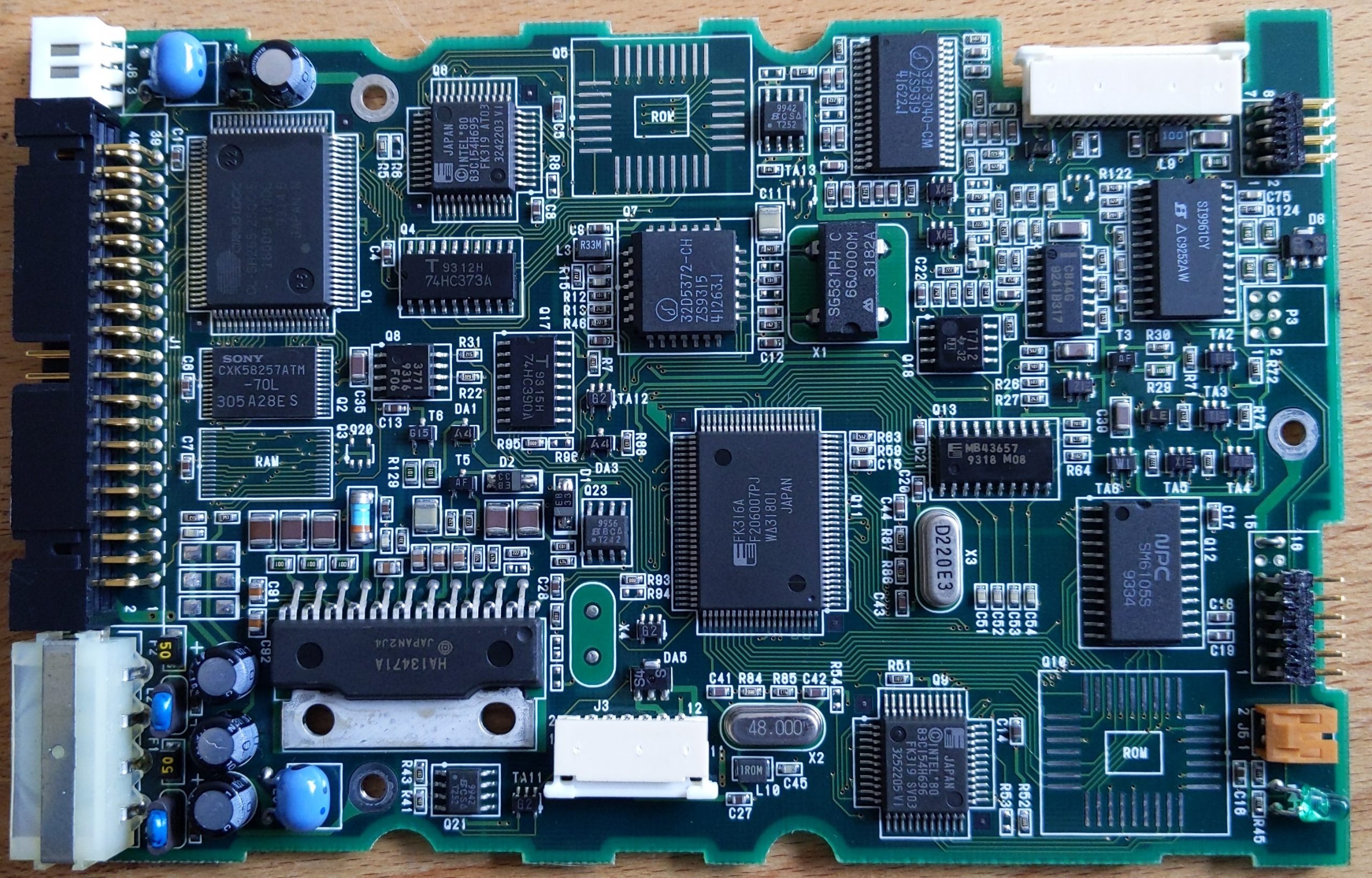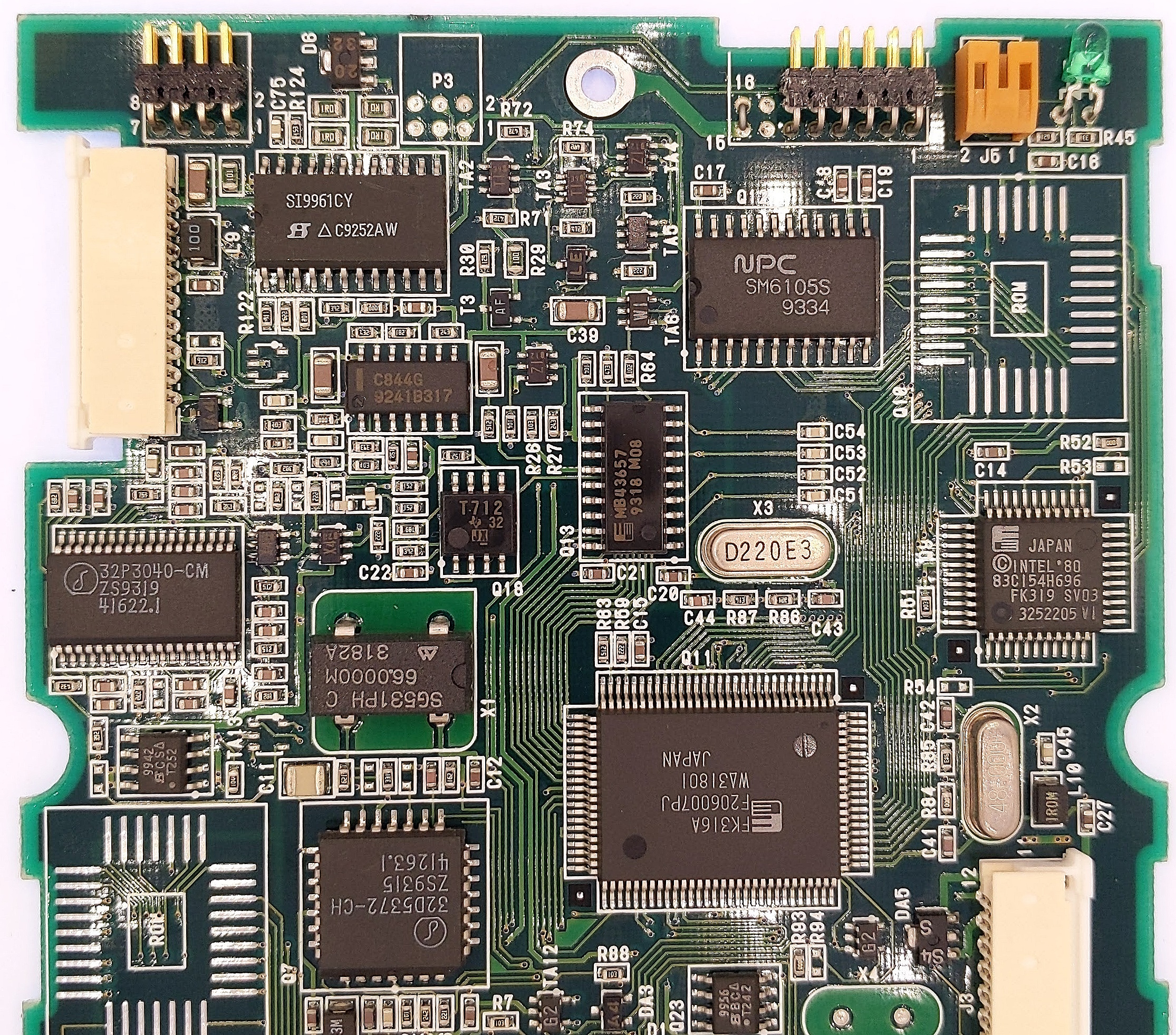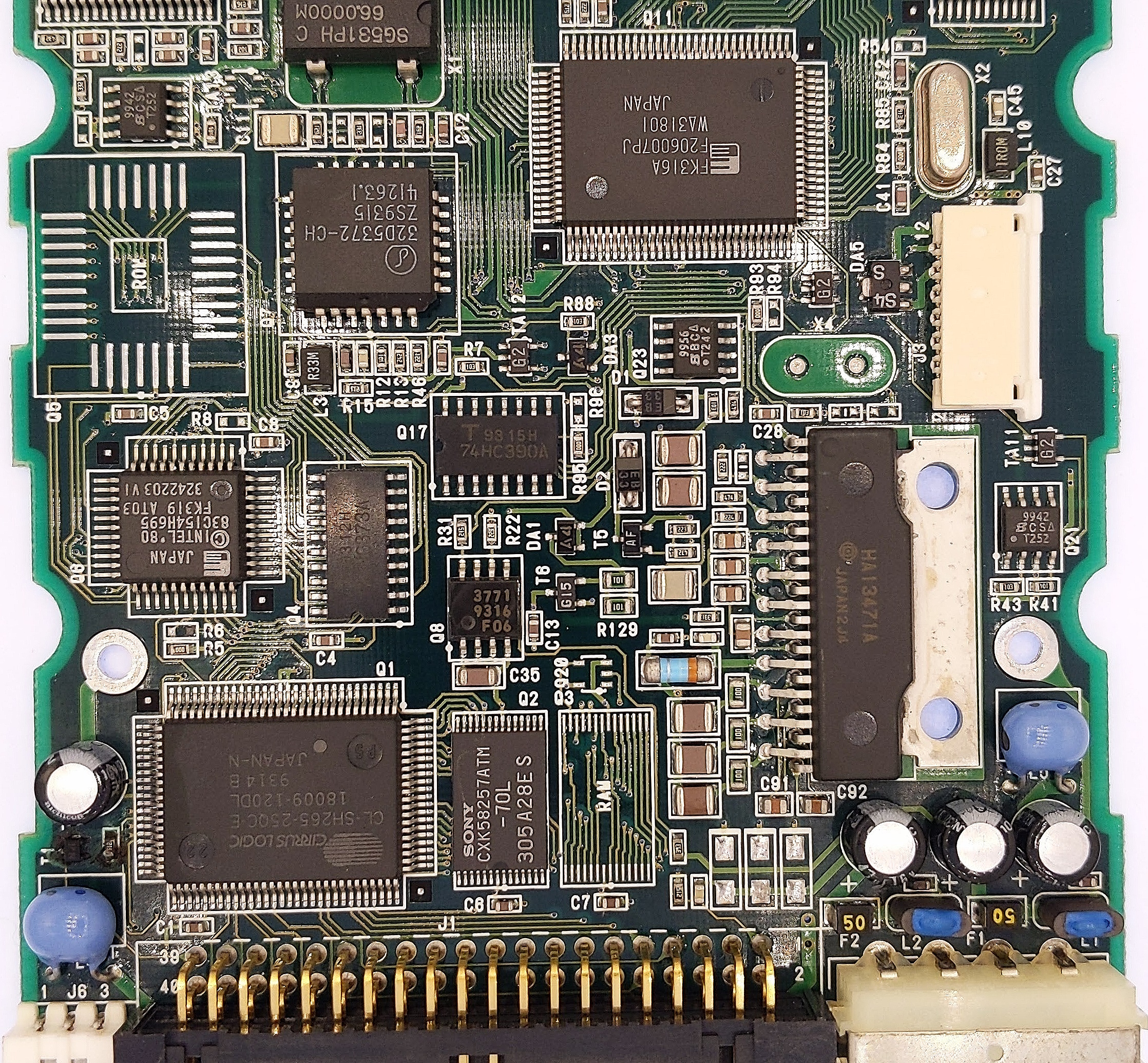It’s worth taking some of this information lightly, as these drives offer very little documentation on the web.
Fuji Electric have had a huge impact on the hard drive industry as a whole, being a massive parts supplier for many years. The company halted further internal drive development past the mid-90’s, resulting in their fully in-house developed drives to be rather difficult to find. This drive is one of the very last designs Fuji Electric conjured up, with little documentation to boot.

Drive Attributes -------------------------------------- Fuji Electric FK319A-240R -------------------------------------- Capacity 240MB Mfc Date 1993 Format 3.5" Interface PATA Platters 2* Heads 4* Cache 32KB RPM ~4400* CHS 604/4/57 (native) Origin Japan (FEC) *assumed/expected based on limited data --------------------------------------
Fuji Electric released the FK319A-126R alongside the FK319A-240R in 1993*, with these two options holding 1 or 2 platters respectively. With an audio spectroanalysis reading 73Hz as the primary spindle motor frequency, these drives have a spindle motor speed of roughly 4,400 RPM.
32KB of cache is all these drives have to offer, being a standard amount for the period.

A very bare label greets us, although the model number is clear. These drives were made in Japan, being a factory Fuji Electric continued to produce various parts in for third party drive manufacturers.
There’s a breather hole in the centre, but aside from that it’s quite empty.


On this side there’s a mini-power connector, alongside standard Molex.

Fuji Electric offered both an external LED header, alongside an internal 3mm LED for activity indication. Aside from a few jumper blocks, there’s not much else on this side.

Removing the PCB, we’re greeted with a standard Nidec spindle motor. Interestingly, both the spindle motor and head-stack connectors are simple ribbon cables, which is a deviation from most manufacturers pressure-contact or pin-block array connection methods as examples.
Both the cast base and spindle motor are labelled as being manufactured in 1993.


The microcontroller is a custom Fuji Electric job, labelled as FK316A. This is an interesting find, as Fuji Electric did also release a series of drives before these, being the FK316A (an example being the FK316A-120R). It can thus be assumed that this microcontroller wasn’t changed for this particular series of drives, with these models being only a revisional change.
There’s some Intel flash memory, which states FK319, indicating firmware placement. The multi-channel CMOS 8-bit A/D converter manufactured by NPC (position Q12) is the newest chip (week 34, 1993), indicating that this drive as a whole was manufactured in mid-late 1993.

On this side we get a slightly better look at the drive connectors. There’s fairly bad capacitor leakage on the left hand side, which will need addressing. Fortunately, there’s no surface mount capacitors on this drive, but all four through-hole electrolytic capacitors will need imminent replacement.
The spindle motor driver is supplied by Hitachi, alongside numerous other chips from various vendors for differing functions.

So, where did this drive come from? The answer is from an unassuming caddy, once belonging to an NEC PC-98 class machine. Were these drives primarily sold domestically within Japan? The answer is unclear, but given the lack of both documentation and imagery in any language aside from Japanese, it is quite likely in the end.
The caddy above seems to have been an add-on unit not licensed by NEC, which explains why the drive is from Fuji Electric instead. Such add-ons were quite popular for use with the PC-98’s (and any NEC machine for that matter), so seeing this one hailing from “Birth Inner” (quite a brand name indeed..) isn’t particularly unsurprising.

Scanning this drive via MHDD reveals this drive has no bad sectors. These models seem to retract their heads after prolonged periods of non-activity, which is why the first sector was slightly slow. This one is in perfect health.

While Fuji Electric are often forgotten about these days, their past efforts should be respected. The drive above shows incredibly well thought-out engineering decisions were made, yet their market share never took off as they perhaps hoped.